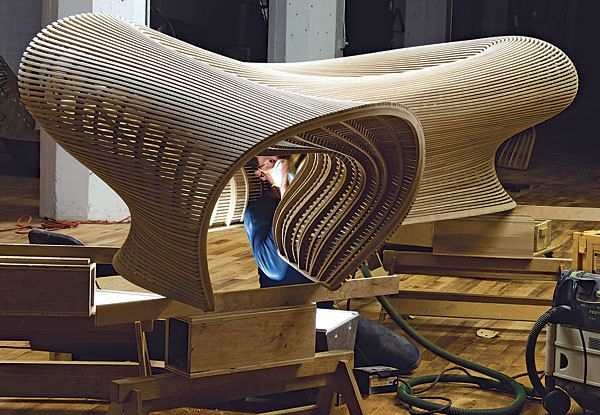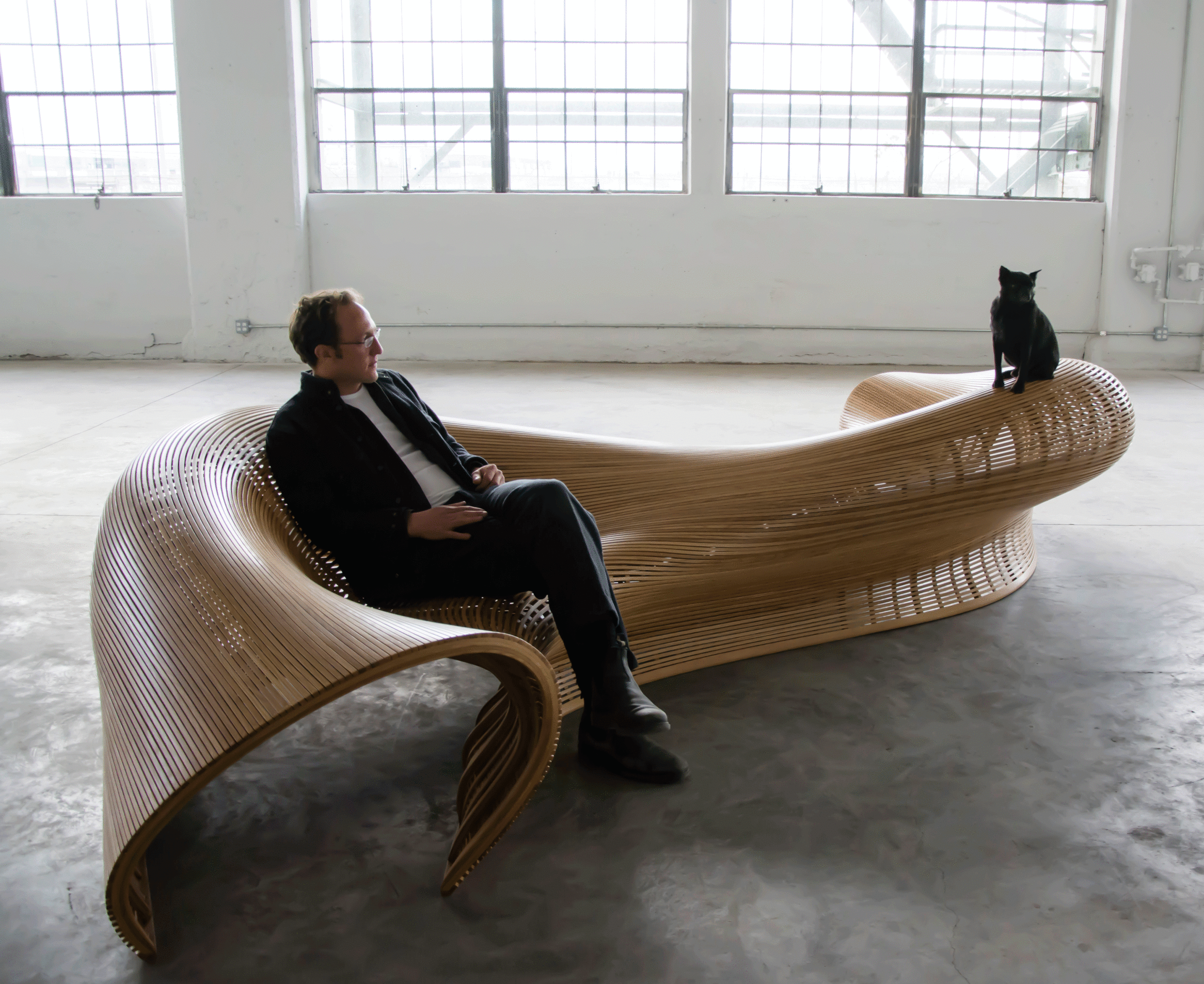Built Like a Boat
Matthias Pliessnig employs boatbuilding techniques to craft his curved seating.

Synopsis: Matthias Pliessnig employs boatbuilding techniques to craft his curved seating. After some work in a 3-D modeling program, a latticework of ribs and stringers takes shape and forms the skeleton of the piece. See how he does it.
In Matthias Pliessnig’s seating pieces, structure and surface are fused. He brings boatbuilding techniques to his furniture, creating for each piece a steambent skeleton overlaid with steam-bent slats, or stringers. He develops the designs on the computer in Rhinoceros, a 3-D modeling program, which, with its draping grid of lines representing compound curved forms, is a perfect corollary to the latticework of ribs and stringers in his furniture. When Pliessnig has a shape he likes on the computer, he takes slices through the drawing and uses those section views as templates for the plywood ribs that are the starting point of the physical structure.
Sketching the structure
Pliessnig roughs out the sofa’s form with temporary ribs and stringers. The ribs, jigsawn or CNC laser-cut from plywood, are fixed to a plywood strongback that snakes along the centerline of the piece providing a level surface. The temporary “sketching stringers,” steam-bent from white oak, let him “play with the shape to make it more attractive or more usable.
Partway there
Pliessnig uses temporary stringers as a mold inside which he can bend temporary oak ribs to shape. After bending final stringers to the temporary ribs, he replaces the ribs with final ones.
Steaming the stringers
Pliessnig steams and bends the stringers one by one, clamping them in place overnight. Then he’ll remove one, sand it, and glue it in place with epoxy. For extra strength, he makes every third or fourth rib thicker.
Smooth stringers. Pliessnig hand-scrapes the entire piece to achieve a smooth, fluid surface across the stringers.
Pegged in place
With hundreds of face-grain glue joints between ribs and stringers, the structure is extremely strong; but for added insurance Pliessnig pegs the stringers into the heavier ribs. For pegs he uses bamboo skewers— one skewer yields 10 to 12 pegs.
Final smoothing
When all else is complete, Pliessnig sands the piece inside and out with a Mirka randomorbit sander, stopping at 220 grit on the inside of the structure and 320 grit on the outside.
For the full article, download the PDF below:
Fine Woodworking Recommended Products

Ridgid EB4424 Oscillating Spindle/Belt Sander








Comments
This is an amazing amount of work.
Log in or create an account to post a comment.
Sign up Log in